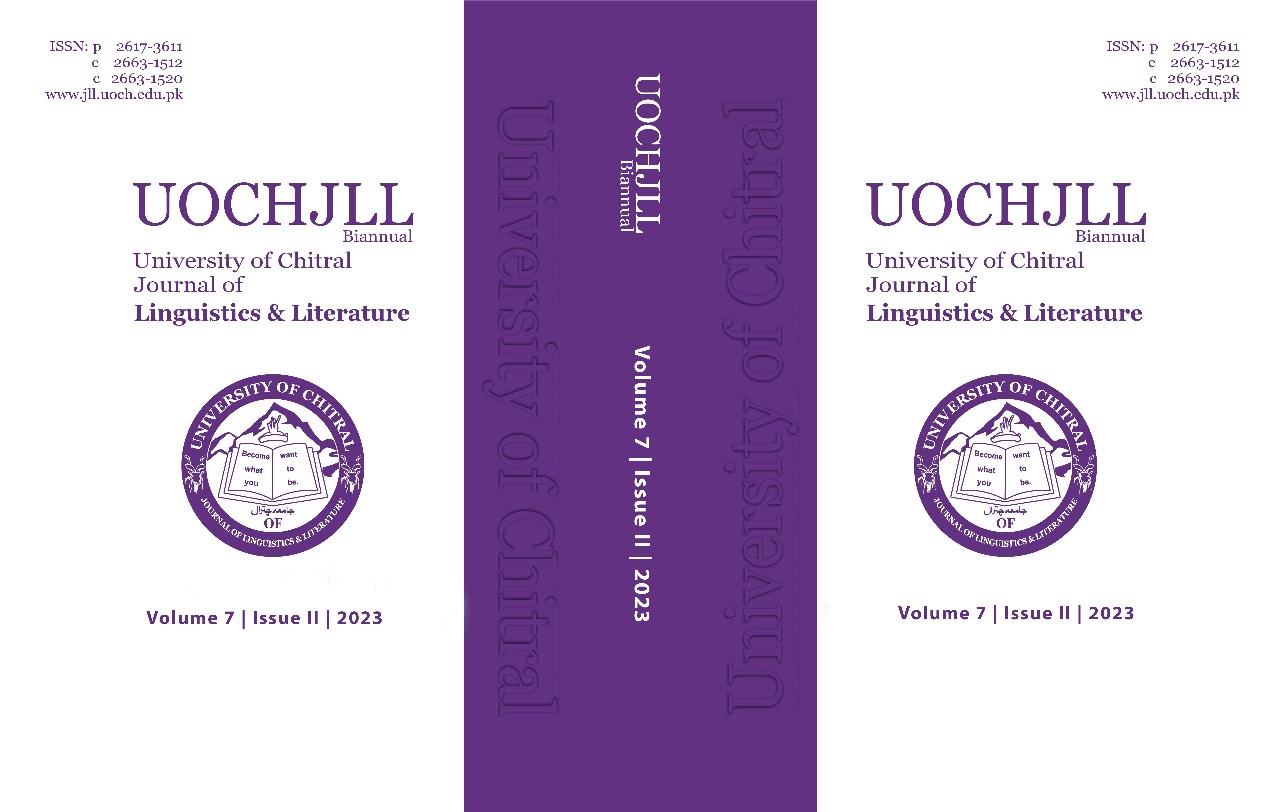Doing Gender in Pashtoon Culture: An Analysis of Real-Life Talk from the Perspective of Gender Differences in Language Use
Keywords:
Gender interaction, Language, Culture, Pashtoon cultureAbstract
This study aims to investigate gender interaction within Pashtoon culture, assessing the applicability of Western-derived language and gender constructs while identifying unique interactional strategies and linguistic markers defining gender roles, power dynamics, and identity within this cultural context. Employing qualitative methods, voice recordings from four families were analyzed using discourse analysis tools, guided by Tannen’s theory of gendered language use.
Results indicate the significant influence of both culture and religion on gender identity formation, with gender norms aligned with prevailing cultural and religious ideologies. The use of derogatory terms for women stepping outside prescribed boundaries underscores the enforcement of gender norms. Various factors, including religious beliefs, hierarchical relational structures inherent to collectivist cultures, and the perpetuation of traditional gender ideologies, contribute to the complexity of gendered language use in Pashtoon society. Notably, in rural areas, where religious adherence is pronounced, gender ideology is deeply embedded within religious practices.
This study contributes to existing literature on the intricate interplay among gender, language, and culture within Pashtoon society. However, further research in urban settings is recommended to explore how differing educational and sociocultural contexts may impact these dynamics.
References
Brown and Levinson’s (1987) Politeness: Some Universals in Language Usage: Cambridge University Press,
Eckert and McConnell-Ginet (1992) Eckert, P., & McConnell-Ginet, S. (1992). Think Practically and Look Locally: Language and Gender as Community-Based Practice. Addison-Wesley.
Eckes, T. (2002). Paternalistic and envious gender stereotypes: testing predictions from the stereotype content model. Sex Roles 47, 99–114. doi: 10.1023/a:1021020920715
Elinor Keenan's study (1974, revised 1989) Norm-makers, norm-breakers: use of speech by men and women in a Malagasy community. In Bauman, Richard & Sherzer, Joel (eds.), Explorations in the ethnography of speaking, 125–43. Cambridge University Press.Google Scholar
Fishman (1983) Fishman, P. (1983). Interaction: The work women do’.IB. Thorne, C. Kramarae, & N. Henley (Eds.), Language, gender and society (pp. 89–101). Cambridge: Newbury House Publishers
Garfinkel H. (1967) Studies in Ethnomethodology.Polity Press Bks
Gumpers(1982 Gumperz (1982 Language and Social Identity (Cambridge University Press, 1982)
Leech. G. 1983 The pragmatics of politeness. (Oxford studies in sociolinguistics. Oxford University Press
Malts and Borker (1982) Maltz, D. N. and Borker, R. A. 1982 A cultural approach to male-female miscommunication. Language and Social Identity, in Gumperz (ed.), 196-216. New York: Cambridge University Press.`
Oches, 1979a ; Bucholtz, 2000). Cited in Sunderland J. (2006) by Routledge 2 Park Square, Milton Park, Abingdon, Oxon OX14 4RN
Quirk, R., S. Greenbaum, G. Leech & J. Svartvik. 1972. A Grammar of Contemporary English, Longman, London
Sacks (1972), Language in Society: Cambridge University Press
Spender (1980) Spender, Dale. (1980). Man Made Language, London: Pandora Press.
Tannen (1990) Tannen, D. (1990). You just don’t understand: Women and men in conversation. New York, NY: William Morrow
Thornborrow, J. (2002). Power talk: Language and interaction in institutional discourse. Harlow, UK: Pearson Education.
Downloads
Published
Issue
Section
License

This work is licensed under a Creative Commons Attribution 4.0 International License.
You are free to:
- Share — copy and redistribute the material in any medium or format for any purpose, even commercially.
- Adapt — remix, transform, and build upon the material for any purpose, even commercially.
- The licensor cannot revoke these freedoms as long as you follow the license terms.





